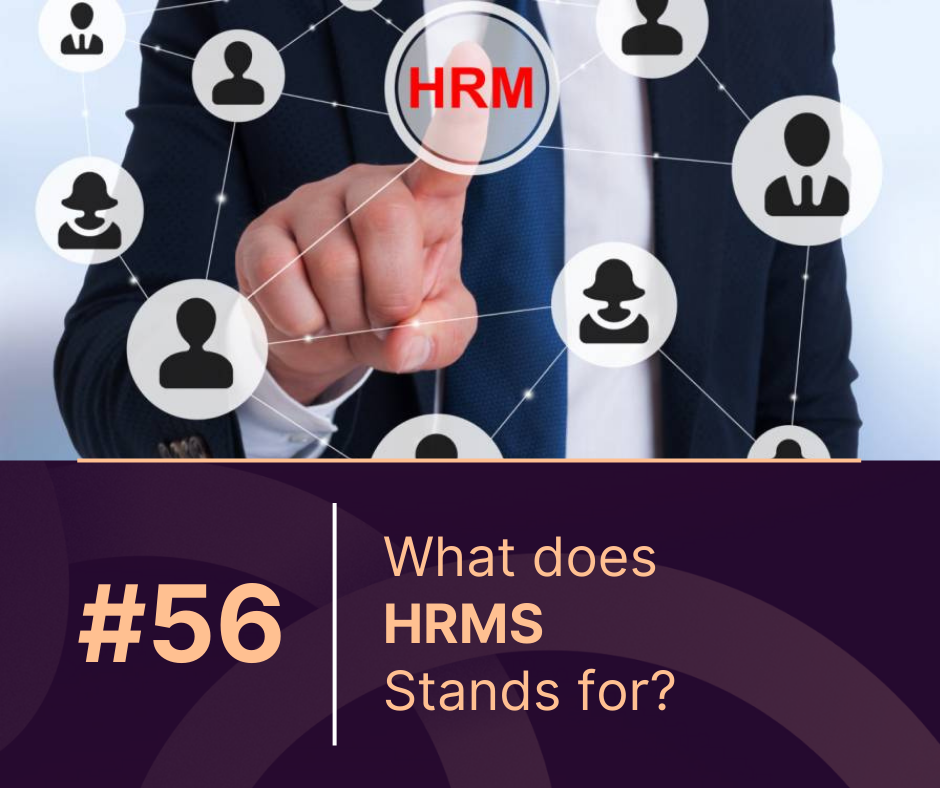Key Overview
- HRMS stands for Human Resource Management System, a tool designed to streamline HR operations.
- It automates key HR functions like payroll, recruitment, and performance management.
- Businesses of all sizes use human resources management system to improve efficiency and compliance.
- The human resources management system market is projected to reach $33.57 billion by 2028, with a 10.4% CAGR.
- Choosing the right human resources management system depends on scalability, integration, and compliance features.
Introduction
HRMS stands for Human Resource Management System, a comprehensive software solution designed to streamline and automate HR functions. From recruitment and payroll processing to employee performance management, human resources management system software enhances efficiency and productivity in modern workplaces. In this article, we will explore what HRMS stands for, its key features, benefits, and why businesses need it today.
What Does HRMS Stand For?
HRMS stands for Human Resource Management System, a technology-driven solution that integrates multiple HR functions into a single platform. It allows businesses to manage their workforce effectively while reducing administrative workload. human resources management system software is widely used in small, medium, and large enterprises to ensure smooth HR operations.
Key Features of HRMS
A well-integrated human resources management system offers several features that simplify HR processes, including:
- Employee Information Management – Centralized database to store employee details.
- Payroll Management – Automates salary processing, tax deductions, and benefits.
- Recruitment & Onboarding – Streamlines hiring and onboarding new employees.
- Time & Attendance Tracking – Monitors employee work hours and leave records.
- Performance Management – Helps evaluate employee performance and set goals.
- Training & Development – Supports employee skill enhancement programs.
- Compliance Management – Ensures legal and regulatory compliance.
- Employee Self-Service Portal – Allows employees to access HR-related information.
Why Businesses Need HRMS in 2025

HRMS software is no longer a luxury but a necessity for businesses. Here’s why:
- Saves Time: Automates repetitive HR tasks, allowing HR professionals to focus on strategic planning.
- Improves Accuracy: Reduces human errors in payroll processing and compliance reporting.
- Enhances Employee Experience: Offers self-service portals for employees to access payslips, request leave, and update personal details.
- Boosts Productivity: Streamlines HR workflows, improving overall organizational efficiency.
- Data-Driven Decision Making: Provides analytics and reports to help businesses make informed decisions.
HRMS Market Trends and Statistics

- The global HRMS market is projected to reach $33.57 billion by 2028, growing at a CAGR of 10.4% from 2022.
- Over 60% of organizations worldwide use human resources management system software for managing human resources.
- 85% of HR professionals believe HR technology has transformed HR operations significantly.
- Businesses adopting human resources management system report a 30% increase in efficiency and a 25% reduction in HR costs.
Choosing the Right HRMS for Your Business
When selecting an human resources management system, consider the following factors:
- Scalability – Ensure the software grows with your business needs.
- User-Friendly Interface – Opt for a system that is easy to use and navigate.
- Integration Capabilities – Look for compatibility with existing tools such as payroll and accounting software.
- Customization Options – Choose a system that can be tailored to your business requirements.
- Security & Compliance – Ensure the human resources management system complies with labor laws and data security regulations.
Conclusion
HRMS stands for Human Resource Management System, a powerful tool that modern businesses use to manage HR operations efficiently. With features like payroll automation, employee self-service, and performance tracking, HR software enhances productivity and ensures compliance. As HR technology continues to evolve, adopting an human resources management system is crucial for businesses looking to streamline HR processes and improve workforce management.
FAQs
1. What is the full form of HRMS?
HRMS stands for Human Resource Management System, a software solution designed to manage HR functions effectively.
2. How does HRMS help in payroll processing?
Human resources management system automates salary calculations, tax deductions, and benefits management, reducing errors and saving time.
3. Can small businesses use human resources management system ?
Yes, human resources management system solutions are available for small businesses, offering scalable features to manage HR tasks efficiently.
4. What is the difference between HRMS and HRIS?
HRMS includes HRIS (Human Resource Information System) functionalities but also offers additional features like payroll management and performance tracking.
5. What are the top human resources management system software in 2025?
Some of the top human resources management system software in 2024 include Workday, BambooHR, SAP SuccessFactors, and MaxHR.
By implementing human resources management system, businesses can simplify HR operations, enhance efficiency, and improve employee satisfaction. If you’re considering adopting human resources management system software, evaluate your business needs and choose the right system for long-term success.



